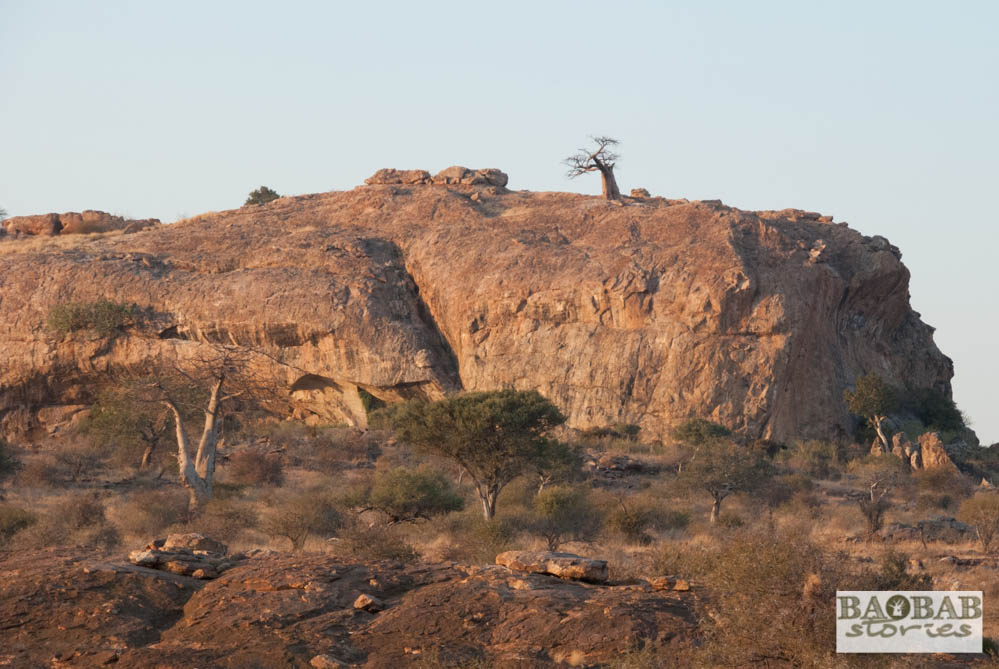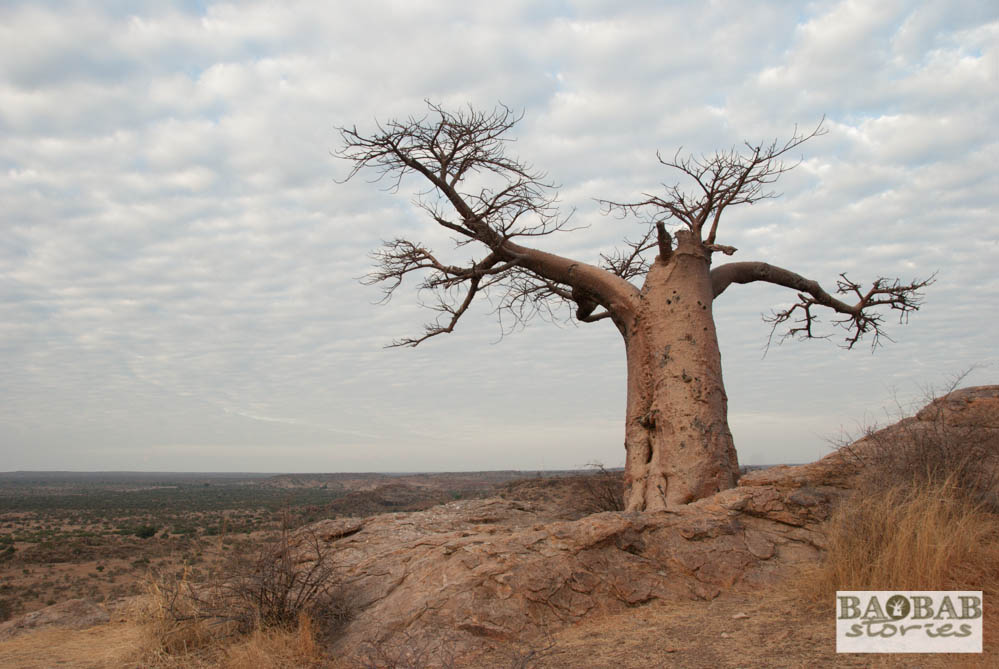
Rhodes Baobab, Mmamagwa, Mashatu, Tuli Block, Botswana
The sun burns down from the sky, the air is thick with the smell of wild sage and the wind rustles gently through the yellow dry grass on top of Mmamagwa: a formidable and special rock formation in Mashatu in the Tuli Block of South-East Botswana – close to the South African border. The area is known as the ‚land of the giants“: Elephants aplenty, Nyala Berries known as Mashatu trees and baobabs in a breathtaking, vast landscape. The latter like it hot, dry and thrive in environments with lean soils. The area seems to have just the right conditions for the iconic trees.

Rhodes Baobab, Mmamagwa, Mashatu, Tuli Block, Botswana
No wonder that we share this special hilltop with a rather unusual specimen known as Rhodes Baobab. The solitary tree towers above the magnificent scenery like a sentinel on the most exposed spot: it can be seen from far away. A rather brave attempt to survive under such conditions – but it seemed to have managed just fine over the last hundreds of years.

Rhodes Baobab, Mmamagwa, Mashatu, Tuli Block, Botswana
History has it that Cecil John Rhodes left his initials on the tree while he visited the site in an attempt to implement his ambitious railway project from Cape to Cairo. But topography and climate in the area proved unsuitable and the railway was built elsewhere. The initials remained. Nevertheless, the view over the vast landscape from that spot is simply breathtaking.

Game with stones, Rhodes Baobab, Mmamagwa, Mashatu, Tuli Block, Botswana
The rock formation with the remarkable baobab is not only impressive but culturally and archaeologically important for the area. Thousands of years ago hunters and gatherers used the rock formation to spot prey or potential enemies. Signs of former human habitation like artefacts – for example grinding stones for grain, arrowheads or games carved into rocks – can still be found. The area seems timeless – as if the former inhabitants have only left recently. The rock formation belongs to the larger geographical area of Mapungubwe which is an archaeologically important region for South Africa. The first kingdom of the region was created there around 1220 AD.

Rhodes Baobab, Mmamagwa, Mashatu, Tuli Block, Botswana
Rhodes Baobab is by far the most spectacular of the area but not the only giant. Not far from it reside his colleagues and form the so called ‚alley of the baobabs‘. The trees grow on a ridge in single file looking like they were planted by giants. The baobabs probably grew that way because the ridge formation provided some protection for the former saplings from browsing animals. The atmosphere around the baobabs on Mmamagwa and the alley is unique. A bit further away from Mmamagwa but still in the same ecological environment grows another fine specimen – another sentinel guarding the natural entrance to silent valley. Watching the sun setting behind it is another special treat and creates unrivalled moments of solitude and tranquility.

Pingback: Henry Parsons' baobab story - Baobab